October 2021
October 21, 2021
Alfred Schmitz’s Casket with Internal Body Supports
A casket designed for upright burial. From Schmitz's 1975 patent:In the past, caskets and vaults have been buried in a substantially horizontal position. Burial space, especially in urban areas, is becoming more scarce. A solution to such a problem may be found in burying caskets in a substantially vertical position. With such burial techniques, the amount of space required for each burial is substantially reduced.
While previously known caskets could be buried vertically, rather than horizontally, it should be realized that their use might be found distasteful by those who have been close to the party to be buried. An objection to the use of prior caskets may be found in the fact that in prior caskets generally there is nothing to support the body against shifting toward the foot end of the casket when buried in an upright position. Thus, if a conventional casket is tipped upright the body would slump to the foot end of the casket.
Related post: Upright Burial

Posted By: Alex - Thu Oct 21, 2021 -
Comments (0)
Category: Death, Inventions, Patents, 1970s
Kentucky Roast Beef
Here's a neat article about this failed venture by Colonel Sanders.You won't find the image below at that page.
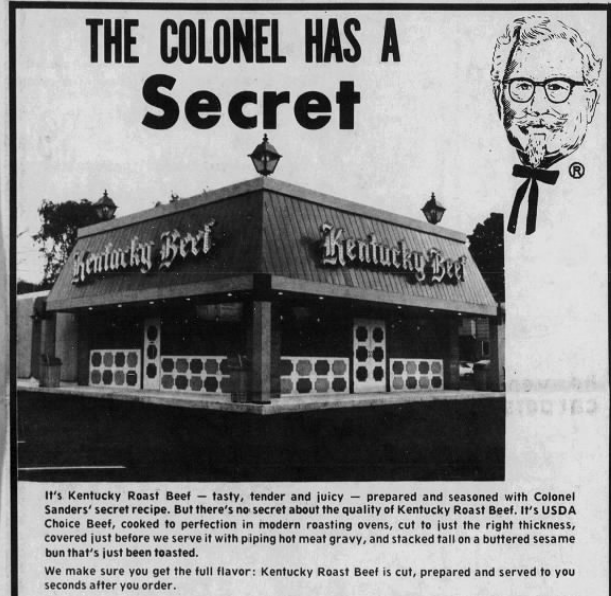
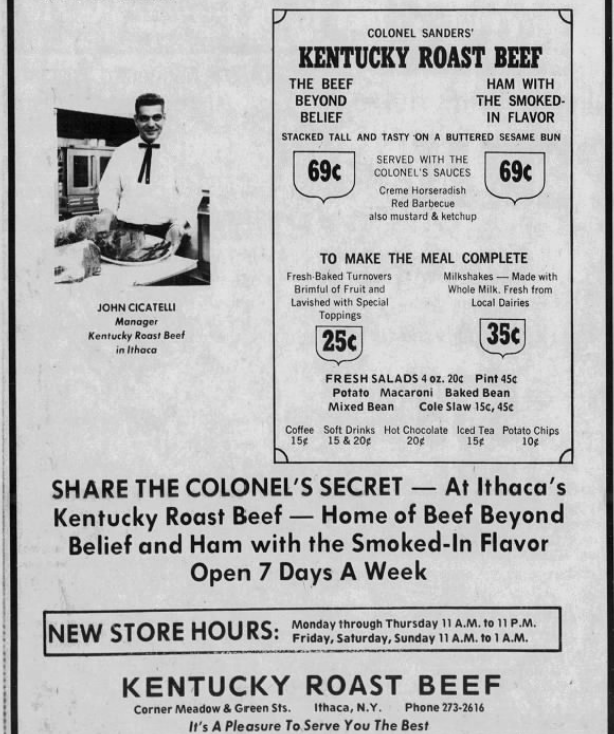
Posted By: Paul - Thu Oct 21, 2021 -
Comments (3)
Category: Business, Advertising, Food, Success & Failure, 1960s
October 20, 2021
Haruo Shimada, Child Artist
As a young boy of five living in Tokyo, Haruo Shimada was hailed as an artistic prodigy. Articles about him appeared in American papers as well as in Life magazine. It was noted that his preferred subject was 'impressionistic nudes'.

With news stories like this there's usually no follow-up, which I always find frustrating. So you never find out what happened to these people later in life. But that's not the case with Shimada thanks to his personal website on which he tells the story (in English) of his subsequent career.
Shimada explains that he gave up painting while still young, after his instructor, Kenzo Akada, moved to the United States. In college he studied economics, and eventually he became a professor of economics at Keio University and MIT. But late in life, at around the age of 60, he decided to take up painting again and ended up having an exhibition of his work at Chanel's flagship store in the Ginza district of Tokyo.
He's posted a gallery on his site of some of his later works. I don't see any nudes. Instead, his preferred subjects now seem to be landscapes and abstract patterns.

Chicago Tribune - May 14, 1950
Posted By: Alex - Wed Oct 20, 2021 -
Comments (1)
Category: Art, Children, 1950s
Aldo Tambellini’s BLACKOUT (1965)
Let us know when you jump ship.The creator's Wikipedia page.
Posted By: Paul - Wed Oct 20, 2021 -
Comments (1)
Category: Art, Avant Garde, Video, 1960s, Cacophony, Dissonance, White Noise and Other Sonic Assaults
October 19, 2021
American Tentative Society
The officers of the American Tentative Society insisted that, despite the odd name, the society wasn't a joke. Its purpose, they explained, was to promote the idea that scientific knowledge should always be regarded as tentative — subject to growth, revision, and change.The three founders of the society were science journalists Alton Blakeslee, Rennie Taylor, and Pat McGrady. They came up with the concept in the mid-1960s, but it remained nothing more than a crazy idea until 1974, when Taylor died. In his will he bequeathed $300,000 to making the society a reality. This left the other two stuck with the problem of how to spend the money. So they solicited ideas from the public.
As far as I can tell, they ended up using some of the money to give awards to scientists (such as Stephen Jay Gould) whom they viewed as embracing the tentative nature of scientific knowledge. The rest of it was eventually given to the Council for the Advancement of Science Writing to endow a fellowship awarded annually to students accepted for enrollment in graduate-level programs in science writing.
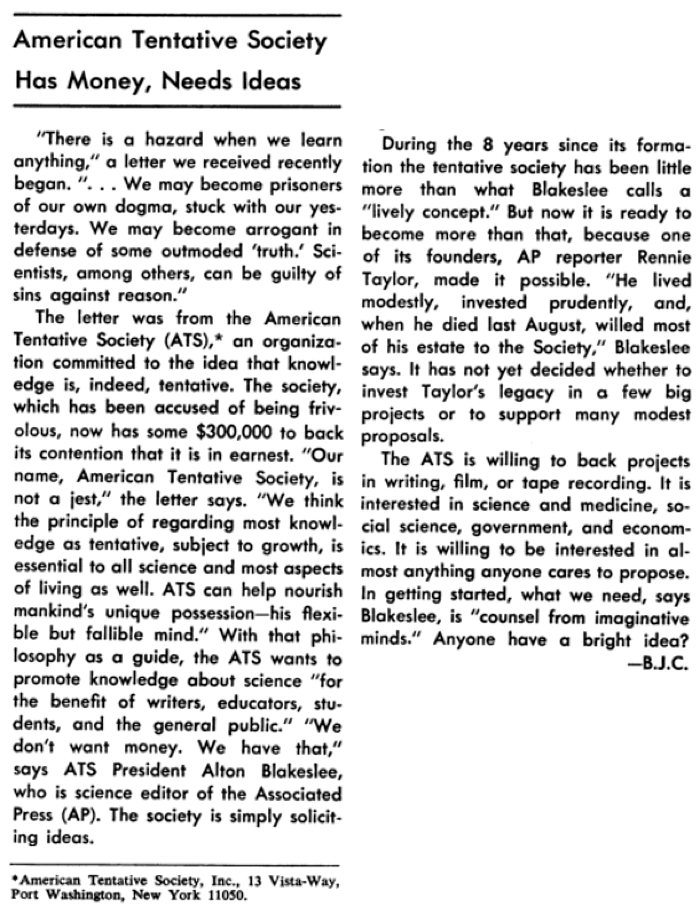
Posted By: Alex - Tue Oct 19, 2021 -
Comments (1)
Category: Clubs, Fraternities and Other Self-selecting Organizations, Science, 1970s
Booth Babes vs. the Teamsters
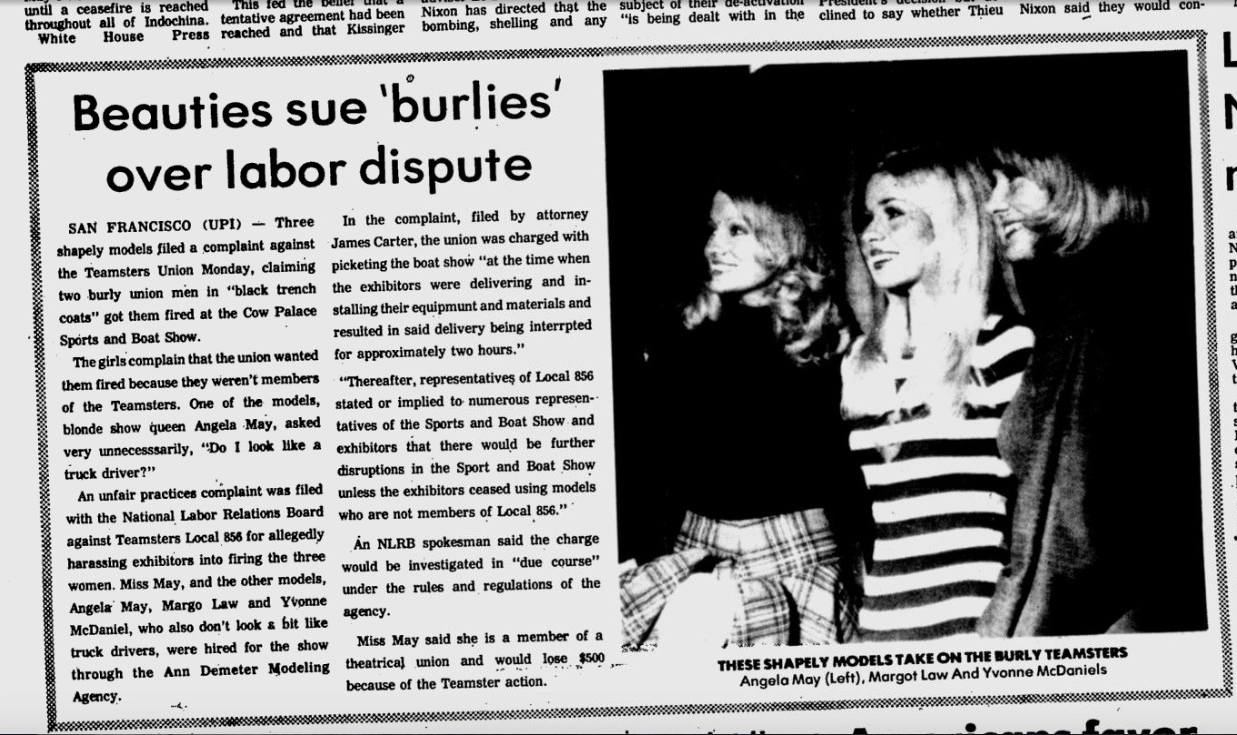
Source.
Posted By: Paul - Tue Oct 19, 2021 -
Comments (2)
Category: Beauty, Ugliness and Other Aesthetic Issues, Business, Conventions, Tradesmen, Manual Laborers, and Skilled Workers, 1970s
October 18, 2021
Richard Nixon, Cottage Cheese, and Ketchup
Richard Nixon's favorite snack was reportedly cottage cheese topped with ketchup.A 1960 article in the LA Times treated this as noncontroversial personal information about the then-presidential candidate, noting that he had acquired a taste for this unusual delicacy from his Quaker grandmother.

Los Angeles Times - Mar 14, 1960
However, by the 1970s Nixon's team was downplaying his fondness for this snack. Helen Smith, the first lady's press secretary, dismissed it as overblown rumor.

Casper Star Tribune - June 5, 1973
Similarly, White House chef Henry Haller, in his book The White House Family Cookbook, denied he had ever seen Nixon eat such a concoction: "If the President ever doused his cottage cheese with catsup, I never saw him, and doubt he ever did."
I suspect the truth is that Nixon enjoyed this snack when he was younger, but didn't continue eating it when he was President. Regardless, the combination of cottage cheese and ketchup was definitely associated with Nixon in the public mind, and it inspired one odd work of art.
In 1973, on the eve of Nixon's second inauguration, the sculptor Carl Andre dumped 500 pounds of cottage cheese on the floor of the Max Protetch gallery in Washington, DC. He then topped this with 10 gallons of ketchup. He called the work 'American Decay'. However, it smelled so bad that it all had to be removed the next day.
More info: Interview Magazine

'American Decay'. Image source: bonhams
Posted By: Alex - Mon Oct 18, 2021 -
Comments (0)
Category: Art, Food, Politics, 1970s
Polygamy Porter
Yet another banned beer, to go alone with Alex's batrachian brew. Article here.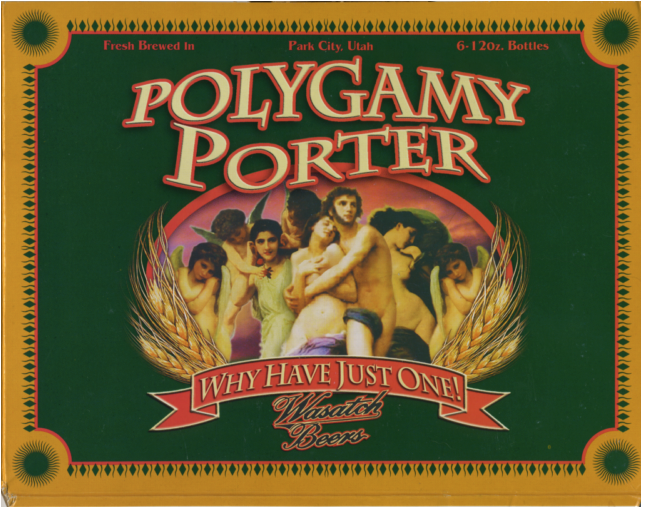
The brewer's site, where you can purchase their t-shirt

Posted By: Paul - Mon Oct 18, 2021 -
Comments (1)
Category: Censorship, Bluenoses, Taboos, Prohibitions and Other Cultural No-No’s, Fashion, Marriage, Alcohol
October 17, 2021
Who Put the Benzedrine in Mrs Murphy’s Ovaltine?
Hit song of the 1940s. Explanation from YouTube: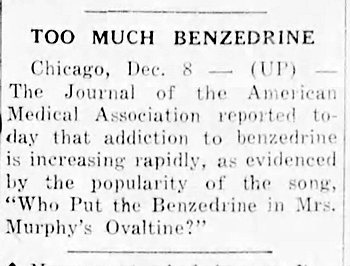
Petoskey News Review - Dec 8, 1947
The folk song it was parodying:
Posted By: Alex - Sun Oct 17, 2021 -
Comments (1)
Category: Drugs, Music, 1940s
High Spirits
A unique defense.Source: Daily News (New York, New York) 08 Mar 1943, Mon Page 219
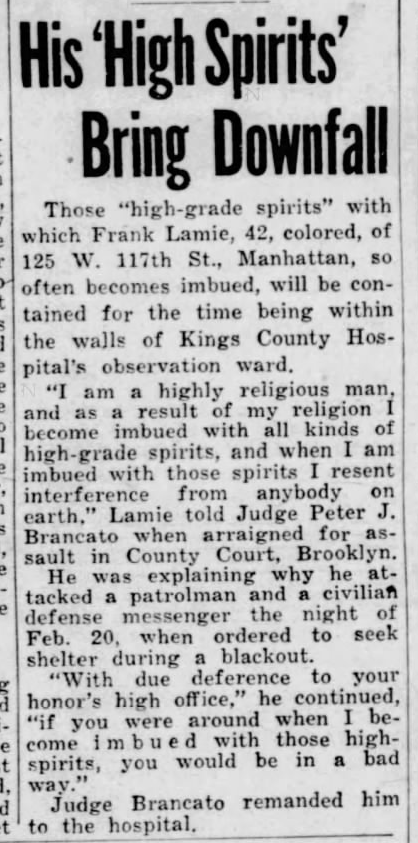
Posted By: Paul - Sun Oct 17, 2021 -
Comments (0)
Category: Eccentrics, Police and Other Law Enforcement, Religion, Mental Health and Insanity
| Get WU Posts by Email | |
|---|---|

| Who We Are |
|---|
| Alex Boese Alex is the creator and curator of the Museum of Hoaxes. He's also the author of various weird, non-fiction books such as Elephants on Acid. Paul Di Filippo Paul has been paid to put weird ideas into fictional form for over thirty years, in his career as a noted science fiction writer. He has recently begun blogging on many curious topics with three fellow writers at The Inferior 4+1. Chuck Shepherd Chuck is the purveyor of News of the Weird, the syndicated column which for decades has set the gold-standard for reporting on oddities and the bizarre. Our banner was drawn by the legendary underground cartoonist Rick Altergott. Contact Us |

